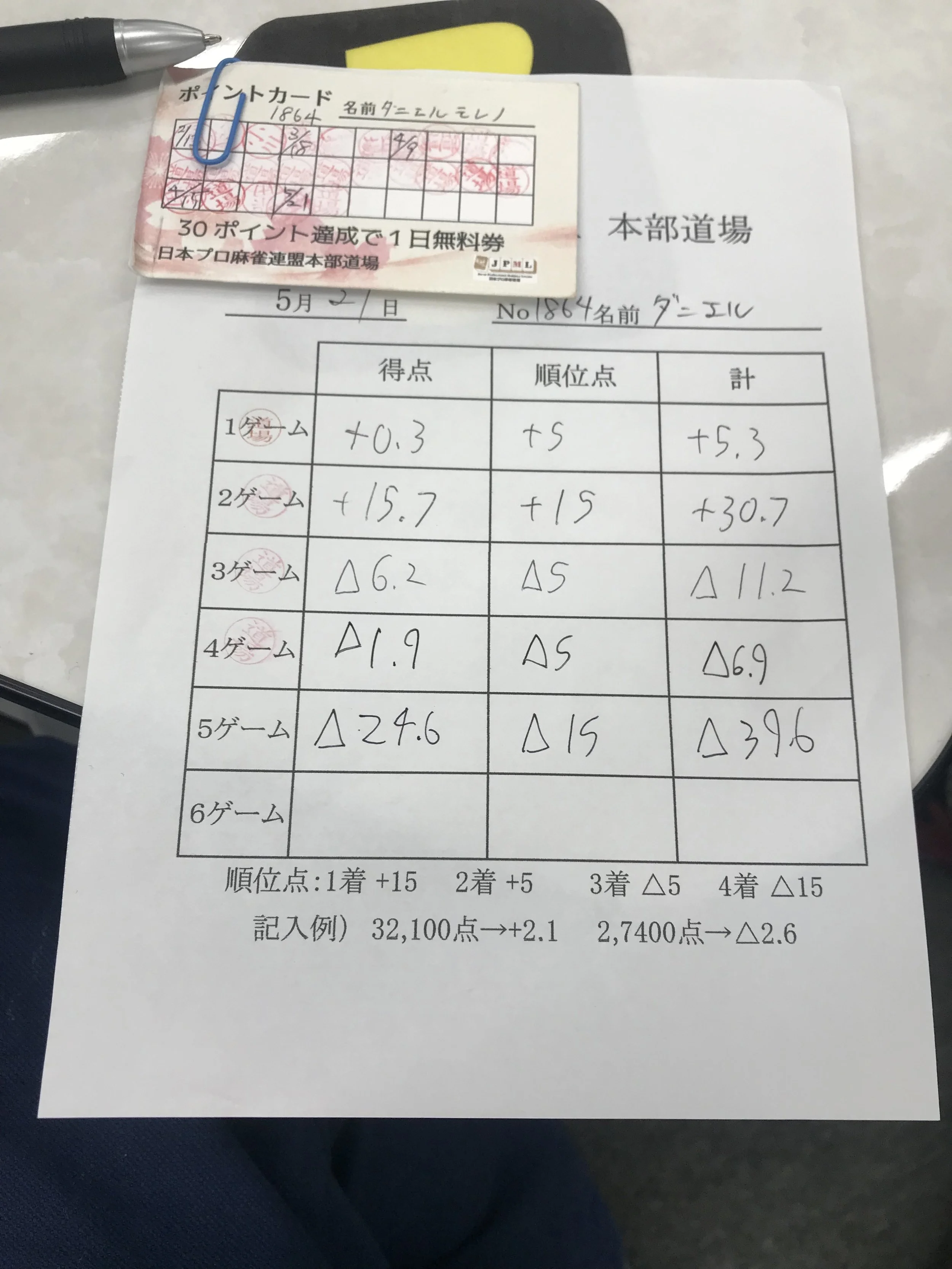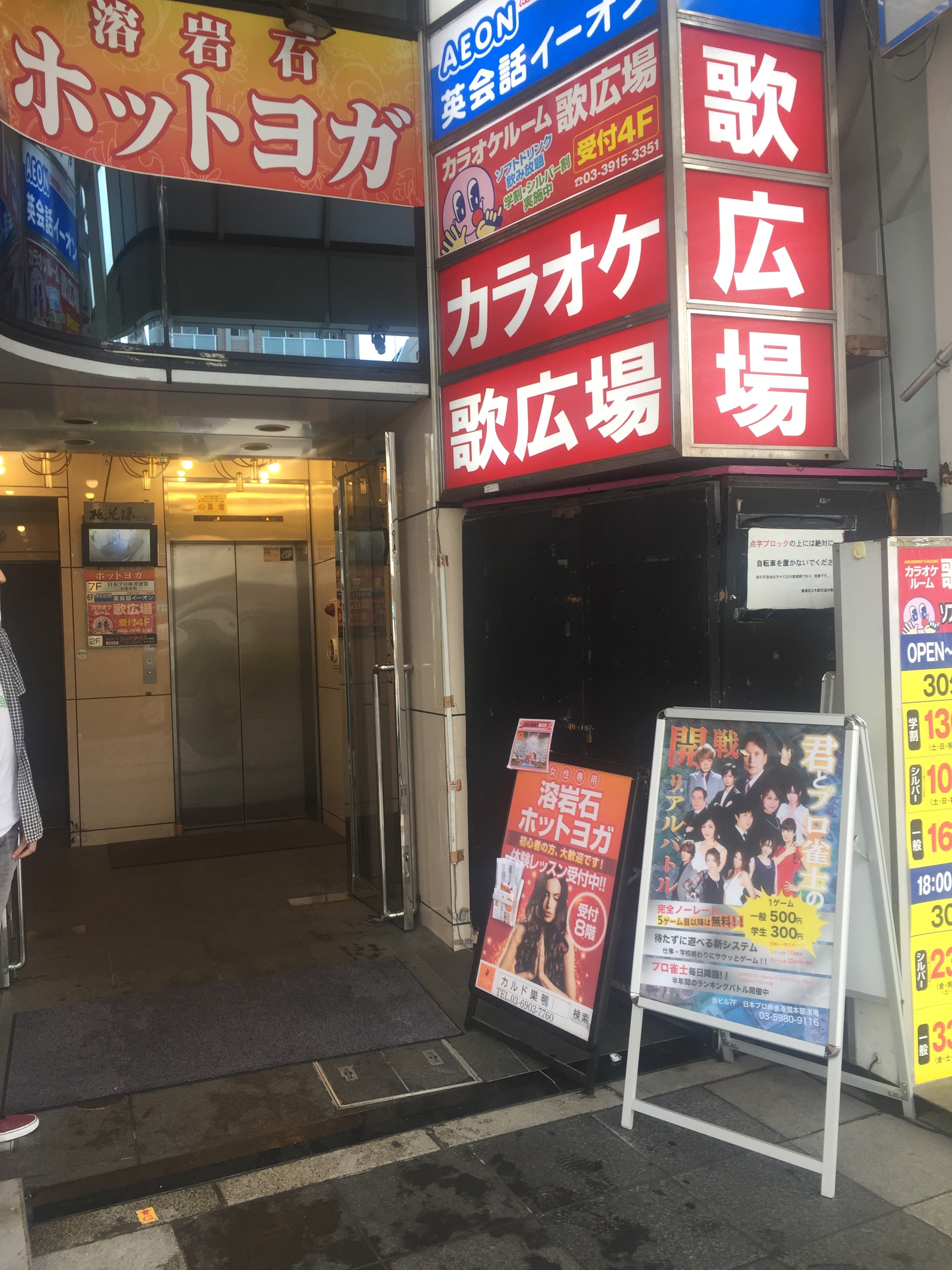How to JPML Dojo
Where to go to play mahjong in Tokyo? Nowadays, I think there is a clear and simple answer for those who need somewhere gaijin (foreigner) friendly…
The JPML dojo at Sugamo! It’s right on the Yamanote line so very accessible from wherever your lodgings may be.
Google maps: https://goo.gl/maps/XkmfXp3WQJsiFkfk9
Here is a walkthrough on how to survive a trip without any awkwardness.
The dojo plays six hanchan Mon-Fri. Mon-Thu are WRC rules. Fri is JPML A-rules. The first hanchan starts at 5pm and a new hanchan starts on the hour (a hanchan is 50 minutes). Make sure you try and get there 10 minutes before a hanchan starts to be sure you can register in time and are assigned a seat.
There are regular guest pro appearances and other professionals may drop in so it’s a good chance to get those books signed!
Finding the dojo isn’t the easiest. As with all the best places in Japan, it’s up a mid-rise accessed by a staircase tucked away from the street. It’s on the opposite side of the road from the station. There is a crossing directly below it and the access is next to the Family Mart. It has a board outside advertising. This is the elevator you need to take…
The floor you’ll need is lucky number 7. You can see Japan Professional Mahjong League (日本プロ麻雀連盟).
Step out of the elevator and there is only one door to worry about. You’ll see a reception desk immediately. They’ll want to know if you’ve been before. If you have, you should have a card and a player number. If not, say it’s your first time and they’ll issue you one. (はじめてです/Hajimete desu. However “First time” is also perfectly okay and very Tokyo metropolitan).
They will also ask you how many hanchan you intend to play. You can play up to six. Each hanchan costs 500 JPY, but this is capped at 2,000 JPY. (Ladies sometimes get a discount but I’m never sure how, when or why) Once you’ve told them how many you intend to play, you’ll be given your player paper for the evening. The one in the picture has had the first game completed. The stamps indicate how many hanchan you have paid for (max four because everything after that is service!)
Very soon before the next session starts, you will be offered to draw a playing card (トランプ/torampu in Japanese). This playing card number is the table you’re sat at. Be aware that the first two tables closest to the desk are not included in the numbering system. The number start on the next row along and looks something like this:
X 2 4 6 8
X 1 3 5 7
and so on…
Table 1 tends to sit the guest pro of the night.
When you’ve got to your table, you’ll need to decide your wind. This uses the WRC method. But you are unlikely to be asked to do it so I wouldn’t worry too much.
Take your seat as directed and then the table on your left is your table where you can place your drink (only bring bottles to prevent a horrible spillage).
So now you play your game! It’s a 50 minute timer which is displayed on the screen with a warning at 10 and 5 mins. You finish the hanchan in which the buzzer rings and that’s it. My tip to not upset your fellow players is play fast. Playing slow will annoy them. It might be that you can’t play to the best of your ability for the first few hanchan but that’s okay; this is an experience. You’ll soon get the hang of it and wonder how we ever play so slow at home.
Once you have completed the game, you need to fill in your scores. You need to write yours minus the 30,000 you start with and divide by 100. DO NOT use the mahjong table to rest on while you write, that’s a big no-no. Use the side table.
Here is a more completed sheet (with a member points card).
Delta is the minus sign and avoid the “continental seven” to make it easier for the Japanese players to understand. The uma is +15, +5, -5, -15.
Once you’ve written your score, everyone puts their sheets in the middle and checks that they add up.
The staff will come around and ask who won. If you’re the top player you will get a stamp on your card and if you get a yakuman, you get 10 stamps. You then get to draw another card and the next hanchan continues.
Other than the actual mahjong, there are places to hang your coat (you should get into that habit in Japan), the smoking area is on the fire escape and the restrooms are at the back on the right with a little screen.
The JPML dojo is fairly unique in Japan in that it’s clean and new and non-gambling. There have been increasing reports of previously friendly places turning away foreigners. No such report has been given about the JPML dojo and they are definitely pushing a healthier attitude toward the game and our community. Even if you do try a seedier place at some point in your trip, do not miss the chance to play here and see the future of riichi!
That’s about it for a walkthrough! Just remember to smile and be polite.
Comments on for questions of the points I inevitably forgot to cover!








